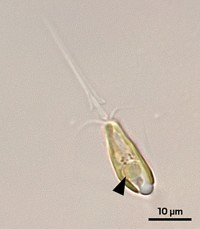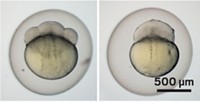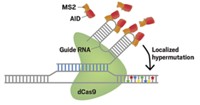Advertisement
Grab your lab coat. Let's get started
Welcome!
Welcome!
Create an account below to get 6 C&EN articles per month, receive newsletters and more - all free.
It seems this is your first time logging in online. Please enter the following information to continue.
As an ACS member you automatically get access to this site. All we need is few more details to create your reading experience.
Not you? Sign in with a different account.
Not you? Sign in with a different account.
ERROR 1
ERROR 1
ERROR 2
ERROR 2
ERROR 2
ERROR 2
ERROR 2
Password and Confirm password must match.
If you have an ACS member number, please enter it here so we can link this account to your membership. (optional)
ERROR 2
ACS values your privacy. By submitting your information, you are gaining access to C&EN and subscribing to our weekly newsletter. We use the information you provide to make your reading experience better, and we will never sell your data to third party members.
Natural Products
Egg cell gatekeeper keeps zebrafish sperm in line
A novel fertilization protein in zebrafish keeps out sperm from other species
by Alla Katsnelson
September 6, 2018

What happens when a sperm and egg meet? Scientists know surprisingly little about the molecular mechanics of fertilization; only three proteins central to the process have ever been identified, all in mammals. A new study in Science reports that a tiny protein on the surface of zebrafish eggs acts as a species-specific gatekeeper for sperm, giving fertilization the green light only if the sperm is also from a zebrafish (DOI: 10.1126/science.aat7113).
Researchers in Andrea Pauli’s lab at the Research Institute of Molecular Pathology in Vienna stumbled upon the gene for this 80-amino-acid protein in a poorly-understood region of the zebrafish genome. Zebrafish engineered to lack the gene produced eggs, or oocytes, that couldn’t be fertilized by zebrafish sperm. “We discovered this was a new fertilization factor,” Pauli says. “So far, our data suggest that it helps the sperm bind to the oocyte surface.”
The protein has homologs in other species, but their amino acid sequences vary significantly. “That made us very curious,” Pauli says, “so we decided to do a crazy experiment.” The team used the gene editing tool CRISPR to engineer zebrafish so that their eggs expressed a homolog from a different fish called a medaka. Now, zebrafish sperm couldn’t fertilize the egg, but medaka sperm could. The researchers called the protein Bouncer, a reference to a security guard at a bar.
“This little protein was the only thing we changed on the surface of the oocyte, and that was sufficient to allow sperm from the wrong species to get in,” Pauli says. “That was completely unexpected.” Such species specificity is crucial for animals like fish and frogs, who release their sperm and eggs into the water for fertilization.
“This represents an important contribution to the field of reproduction,” says Enrica Bianchi, a molecular biologist at the Wellcome Sanger Institute who was not involved in the work. The study “is shedding light on an essential step for life that is still full of mysteries.”
Pauli’s team is now looking more closely at how Bouncer works and searching for its binding partner in zebrafish sperm. They are also studying whether Bouncer’s mammalian homolog—a protein called SPACA4, which is expressed in sperm rather than eggs—is also involved in fertilization.





Join the conversation
Contact the reporter
Submit a Letter to the Editor for publication
Engage with us on Twitter